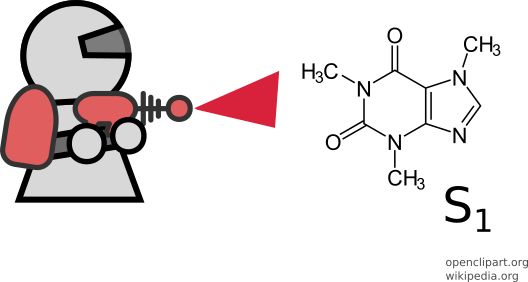
Germanium Fluorides

Theoretical Chemistry @ Montana State University – Bozeman. Mountains and Theory

Back in July (2018), our paper on molecular dissociation, size consistency, and fractional charges, was published in the Journal of Chemical Physics. https://aip.scitation.org/doi/pdf/10.1063/1.5038557
This work introduces our new family of theories, locally coupled open subsystems (LCOS), which is initially intended as a set of electronic structure methods that can lead to controllability of the computational scaling of quantum chemical calculations. A common problem with standard DFT calculations is that electrons/holes usually are delocalized when a single molecule (or more) interacts with a surface that is subject to a bias. A way to resolve this problem is to couple the molecule to the surface in such a way that one can perform separate DFT calculations on the molecule and surface, and then one can introduce another DFT method for the coupling, so the fragments exchange energy and electron charge. This is advantageous from fundamental and computational perspectives. The theory is flexible, and has a good number of potential applications in chemistry and physics.
In our most recent paper, https://journals.aps.org/pra/abstract/10.1103/PhysRevA.98.062505, the full formalism is described. This work includes the possibility of using correlated wave function methods instead of DFT to describe the electronic structure of the molecule and the surface, for instance. The paper also presents the formalism to ensure the spin symmetry of the whole system is preserved, and a way to perform time-dependent propagation of the state of the entire system: The electronic occupations of the fragments can now be obtained as a function of time, meaning that we can let the nuclei evolve as well and/or apply an external field and track the flow of energy and electrons. An important point of the LCOS work is that the computational implementation is simple. The DFT version of LCOS, for example, uses local potentials and density functionals in such a way that computing the charge and energy transferred between the molecule and the surface is not difficult to obtain; LCOS in this context uses ensemble DFT, which features the needed derivative discontinuities!. The next step I am working on is centered on implementing LCOS and applying it to problems where common DFT methods have trouble. The implementation (within NWChem) mostly consists of managing pieces of established code, and using these pieces to make (models of) molecules interact accordingly to the theory. (Update 01/30/19: It’s cold in Chicago!, -20F. Although this is optional, I found several ways to compute the lambda value, or matrix. The implementation will also help in this direction. Update 10/04/19: manuscript under preparation)
Update 05/26, added an incomplete draft of new chapter, yay😀, there’s still a lot of work to do. Update 05/19, found some nasty typos in the old document.
04/22. For a while I’ve been wanting to expand the cookbook, with applications. The theory part will always be incomplete [although it really needs chapter(s) on strong correlation, molecular dissociation, and electronic transport], advances happen by the hour in the literature. But computational applications are simply too important. So I hope the cookbook will double in size this year, with the new half devoted to applications. A crazy winter quarter is over!, and spring is slowly warming up, so it’s time to add recipes to the notes

Check out our ‘just accepted‘ paper [at ACS Energy Letters] on future prospects in quantum chemistry for research in materials and energy research (link here). Given the fast paced advancements in artificial intelligence and learning algorithms, we believe they will have considerable impact in computational chemistry. If the application of DFT survives this wave, an algorithm may choose or create a dft model for you to study some specific material, and its properties; or even come up with a candidate material for a given application. Otherwise, new forms of computer-generated theoretical models might arise for these purposes.
Browsing for irreps the other day I found this recent book on group theory and applications. It’s an interesting and useful reference, includes formalism and examples of groups in solids and molecules. Link:
A news article popped up in my newsfeed about a record in stability. This article shows that copper thyocianate can work as hole-transport material in a lead-based perovskite solar cell. They seem to achieve 1k-hour stability. Very promising indeed. Does lead have its days numbered?
Some of my work on the Runge-Gross theorem (the Hohenberg-Kohn theorem of TDDFT) was published this morning (JCP, 147, 134110). This theorem states that the time-dependent electronic density determines the potential uniquely (up to a constant), so we can define observables as time-dependent density-functionals. This manuscript extends the theorem to include time-dependent densities and potentials that are not Taylor expandable with respect to time. The Supp Info includes an alternative method, and an application to time-dependent current-density functional theory.

I totally forgot to write something about this paper. But before getting to that, an anecdote: Last month some friends and I were sitting out in a hallway of one of the hotels hosting the ACS national meeting. We were definitely looking tired. A guy, who seemed to be experienced in hiring, started talking to us about not giving up and practice more on elevator conversations: your ability to ultra-summarize your work to others. He did spend some time sharing his experiences with us. We must’ve looked really tired (especially me)…
So here is that elevator report for you (web visitor): We got a paper published on estimating the absorption spectrum of excited-states, here. You select an excited state (based on its symmetry, transition energy and oscillator strength from the ground state), and the program outputs its absorption spectrum (in terms of oscillator strengths).
With some extra details, you run a regular linear-response “TDDFT” calculation (starting from the ground-state orbitals), and choose the state. The algorithm perturbs the orbitals using the transition vectors of the chosen state, and then runs the linear-response calculations once again. At the end it prints out the oscillator strengths for transitions starting from the chosen excited-state. The tests I’ve run indicate the printed results are ok against experimental data. The paper is backed by a theory based on quantum mechanics (exact in principle), and the approximations are improvable.
If somebody paid me for an honest brief review of this paper, I’d say: Incomprehensible, intricate, complicated, but seems useful. I love it, but I understand the formalism is hard, but the implementation is quite simple. Applications to organic semiconductors are coming

Anarchy(chaos)+Microchip = Happiness
“Chaos” is an interesting word in science, maybe ’cause is synonym of (according to thesaurus.com): anarchy, disorder, lawlessness, pandemonium, among others?. Aren’t those words that draw our attention? (Many movies are about creating disorder and the journey of some folk trying to restore order). Anyway, it’s been a while since the last post… my bad.

We finally got our paper on hybrid functionals and the local density approximation (lda) accepted. This work presents some basic conditions hybrid XC functionals should satisfy and a discussion on the balance between correlation, HF, and local exchanges. We suggested an adiabatic functional, cam-lda0, which can be used to speed up calculations a little bit. Copies available at the JPCA website, here